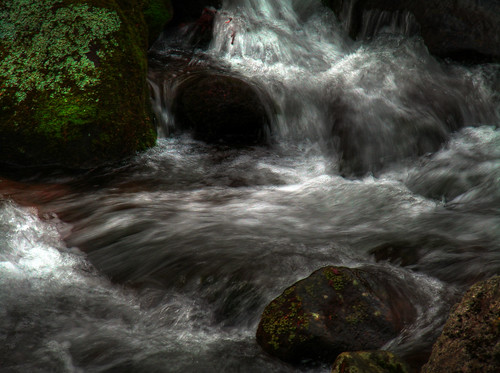

After talking with Don, he indicated that we should collaborate efforts on Stoney Creek. By now you may be thinking about what sort of field project you would like to do. I wanted to make you aware of some of the work that we've been doing at Stoney Creek at Glen Alton. As you heard from Larry Mohn's talk the first week, the 700 m section of Stoney Creek that runs through the field recently had its banks graded and many instream structures (cross veins, rootwads, lunker structures) were added. Of course, this tends to change the bank structure and hydrology of the stream. Prior to the work, cross sections were made at permanent monuments, average riffle, run, and pool depths were made, measurements of LWD and undercut banks were made, and measurements of elevetation were taken at each monument. After a few high flow events, the instream structures may change some of the bed dynamics and riffle/run habitat within the stream. This could potentially be a good comparison with "pre-data."
If you decide to work up there, please let me know because 1) we can coordinate trips and 2) I can show you some of the monuments that would be appropriate to take measurements from. We have large orange caps placed at every 20 m along the stream. We are currently planning a camping trip one weekend where undergraduate students can help with measurements.
Here's some stuff that I will be doing eventually anyway, where it would be good to collaborate:
1) Measuring the meander of the channel
2) Temperature analysis (temp loggers have been placed in the upper, middle, and lower section) - they need to be recorded and analyzed
3) Pebble counts - relating to riffle stability and bedload transport
4) Possibly sedimentation rates (sediment transport?)
5) Measuring "Post-rehabilitation" cross sections (bankfull height, wetted width)
6) Measuring "Post-rehabilitation" habitat unit size (riffle,run, pool depth, width, length)
7) Measuring "Post-rehabilitation" structures (undercut banks, LWD, cover, etc)
After discussing ideas with Don, let me know what stuff you'd be interested in doing and we can collaborate.
Ryan







